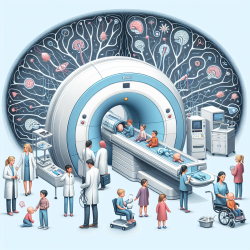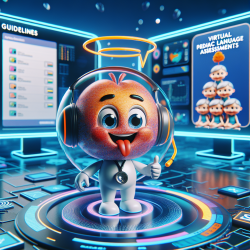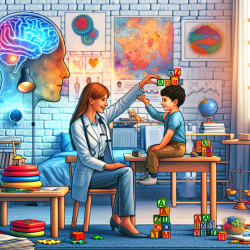Introduction
Magnetic Resonance Imaging (MRI) has long been a staple in medical diagnostics, but its application in understanding neonatal brain development is gaining traction. A recent review article, "MRI of the Neonatal Brain: A Review of Methodological Challenges and Neuroscientific Advances," sheds light on how MRI can be a game-changer in pediatric therapy. This blog explores the research findings and their implications for practitioners in speech language pathology and related fields.
Understanding the Neonatal Brain
The neonatal brain is a complex, rapidly developing organ. Understanding its development is crucial for identifying early signs of neurodevelopmental disorders. The review article highlights several MRI techniques that offer insights into the neonatal brain's anatomy and function, including:
- Anatomical MRI: Provides detailed images of brain structures, helping identify abnormalities.
- Diffusion MRI: Offers insights into the brain's structural connectivity by tracking water diffusion along white matter tracts.
- Functional MRI (fMRI): Captures brain activity by measuring changes in blood flow, offering a glimpse into the brain's functional architecture.
Methodological Challenges and Advances
Conducting MRI on neonates presents unique challenges, such as motion sensitivity and the need for age-specific imaging protocols. The review discusses innovative solutions like specialized MR sequences and post-processing tools that enhance image quality and reliability. These advancements make it possible to explore neurodevelopmental mechanisms more precisely.
Implications for Practitioners
For speech language pathologists and other pediatric therapists, these MRI advancements offer several potential benefits:
- Early Diagnosis: Improved imaging techniques can help identify neurodevelopmental disorders earlier, allowing for timely interventions.
- Customized Therapy: Understanding the specific brain structures involved in a child's condition can lead to more tailored therapeutic approaches.
- Outcome Monitoring: MRI can be used to track the effectiveness of interventions over time, providing data-driven insights into therapy outcomes.
Encouraging Further Research
While the current research offers promising insights, it also highlights the need for further studies to refine MRI techniques and expand their applications. Practitioners are encouraged to stay informed about ongoing research and consider participating in studies that could advance the field.
Conclusion
The integration of advanced MRI techniques into pediatric therapy holds the promise of transforming how practitioners diagnose and treat neurodevelopmental disorders. By embracing these scientific advancements, therapists can improve outcomes for children and contribute to a deeper understanding of the developing brain.
To read the original research paper, please follow this link: MRI of the Neonatal Brain: A Review of Methodological Challenges and Neuroscientific Advances.










